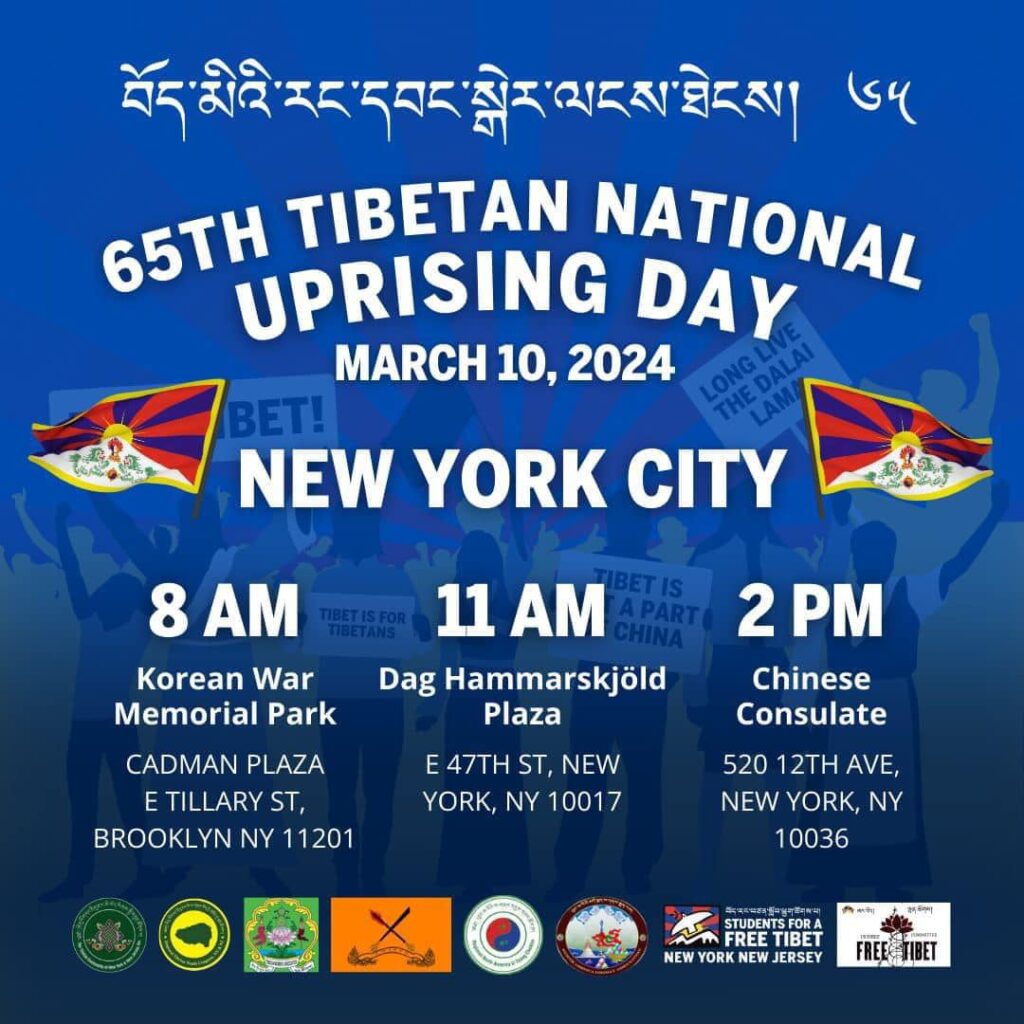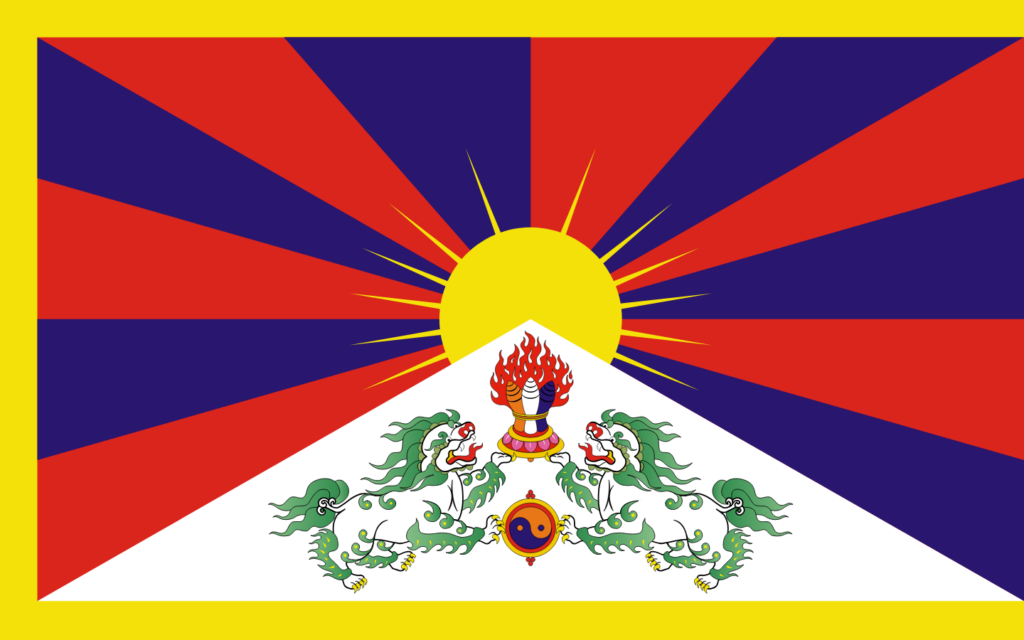Diverse Voices: Women’s Uprising Day Marks 65th Anniversary of Tibetan Struggle

By Daniel Winner | AC JosepH Media Correspondent
This week saw two days of commemoration for the Tibetan struggle for independence: Tibetan Uprising Day and Women’s Uprising Day. Celebrated on March 10 and March 12 respectively, this period is recognized internationally as a major turning point in relations between ethnic Tibetans and the People’s Republic of China.
The event is often heralded with public demonstrations by local Tibetan communities, calling for the expulsion of the Chinese government from Tibetan land. The Tibetan flag, also known as the Snow Lion flag, is flown by celebrants, despite being outlawed by the PRC in 1959.

Tibetan Uprising Day was formed in hindsight of events that took place in 1959. A revolt had formed in Lhasa, the capital of Tibet, by then under control of the People’s Republic of China (PRC) when the Seventeen Point Agreement was reached 8 years prior.
Officially known as the Agreement of the Central People’s Government and the Local Government of Tibet on Measures for the Peaceful Liberation of Tibet, the document laid out the agreements for which Tibetans could coexist with the Chinese government, the latter promising to honor traditional culture and religion. It was ratified by the 14th Dalai Lama Tenzin Gyatso on 24 October 1951.
Although small-scale resistance movements had already formed, 1959 saw the rebellion begin amid tensions over rumors that the PRC was planning to abduct the 14th Dalai Lama. On March 12, thousands of Tibetan women gathered at the Potala Palace, led by Pami Kusang. This event led to the Tibetan women’s movement for independence in the form of Women’s Uprising Day.
The women continued to surround the Potala Palace until March 17, when two artillery shells landed just outside the 14th Dalai Lama’s abode. This prompted the religious leader and his followers to flee into India. Today, the 14th Dalai Lama and the Central Tibetan Administration — often referred to as Tibet’s “government-in-exile” — reside in Dharamshala, India.
The Tibetan community in South Jersey is miniscule, but the population becomes noticeably larger up north, especially in areas such as New Brunswick and Queens, NY. Just last month, Mayor Michael Melham of Belleville, Essex County, faced controversy after receiving an objection letter from China’s vice-consul in New York, after raising the Tibetan Flag at Belleville City Hall in celebration of Losar, the Tibetan New Year.
That didn’t sway the festivities however, as the Tibetan Community of New York & New Jersey (TCNYNJ) took to the streets of New York City on March 10 in a parade of impressive magnitude. The demonstration began at 8 a.m. at the Brooklyn Korean War Veterans Plaza from the United Nation Plaza and culminated at 2 p.m. at the Chinese Consulate General. About 3,000 people participated, in a march of nearly 26 miles.
Two days later on March 12, the Regional Tibetan Women’s Association of NY & NJ (RTWANYNJ) followed suit by gathering at Union Square Park from 4-6 p.m. Along with women speakers calling for independence in Tibet, part of the organization’s goal this year was to raise awareness on recent developments in Chinese treatment of Tibetan children. According to a report released by the Tibet Action Institute in 2021, political authorities in Tibet have established a regionwide network of Chinese-language boarding schools with mandatory attendance for nearly one million children ages 6-18, as well as boarding preschools for children ages 5-6. They are separated from their homes and families, having little contact with their own native language and culture.
RTWANYNJ cited comments made by Pope Francis about a similar system of “residential schools” created in North America in the late 19th century meant to deculturate indigenous children. The Pope apologized for the Church’s role in the development of this system, stating, “I condemned this, taking children away and trying to change their culture, their minds, change their traditions, a race, an entire culture. … You can say that I said it was a genocide.”
As Women’s Uprising Day is observed just two days after Tibetan Uprising Day, it may be mistaken as a display of chauvinism to separate women’s involvement in the overall movement. But it must be acknowledged that denoting a separate day for Tibetan women highlights the invaluable role they have played in the fight for Tibetan independence.
The 1959 uprising showcased a prime example of women breaking any perceived bonds of traditional gender roles in the affirmation of Tibetan freedom. It is their commitment to the preservation of culture, faith, and identity that reminds us just how pivotal women are in the fight for justice, human rights, and self-determination.
The Tibetan Community of New York & New Jersey is a 501 (c)(3) not-for-profit organization focused on supporting the survival of Tibetan culture and identity, and to enhance the quality of life for all Tibetans living in the New York and New Jersey area. It is the oldest Tibetan organization in the United States. Their website can be found at https://tcnynj.org.
The Regional Tibetan Women’s Association of NY & NJ is a regional chapter of the Tibetan Women’s Association (TWA). Their mission is “to empower women across various roles, including college students, working mothers, and single parents, through targeted workshops addressing the specific needs of women” and are “dedicated to educating and raising awareness among youth about our language, cultural heritage, and traditional foundations.” They can be found at https://www.facebook.com/twaofnynj.org.
EDITOR’S NOTE: Daniel Winner has a double major in Religious Studies and Japanese from Penn State University and has traveled internationally to the Far East on several occasions. His insights on Buddhism and Asian culture give a unique view of historical and modern trends. He will be serving as a contributor for Front Runner New Jersey.
Follow Us Today On:
Note from AC JosepH Media: If you like this story and others posted on Front Runner New Jersey.com, lend us a hand so we can keep producing articles like these for New Jersey and the world to see. Click on SUPPORT FRNJ and make a contribution that will go directly in making more stories like this available. Thank you for reading!







